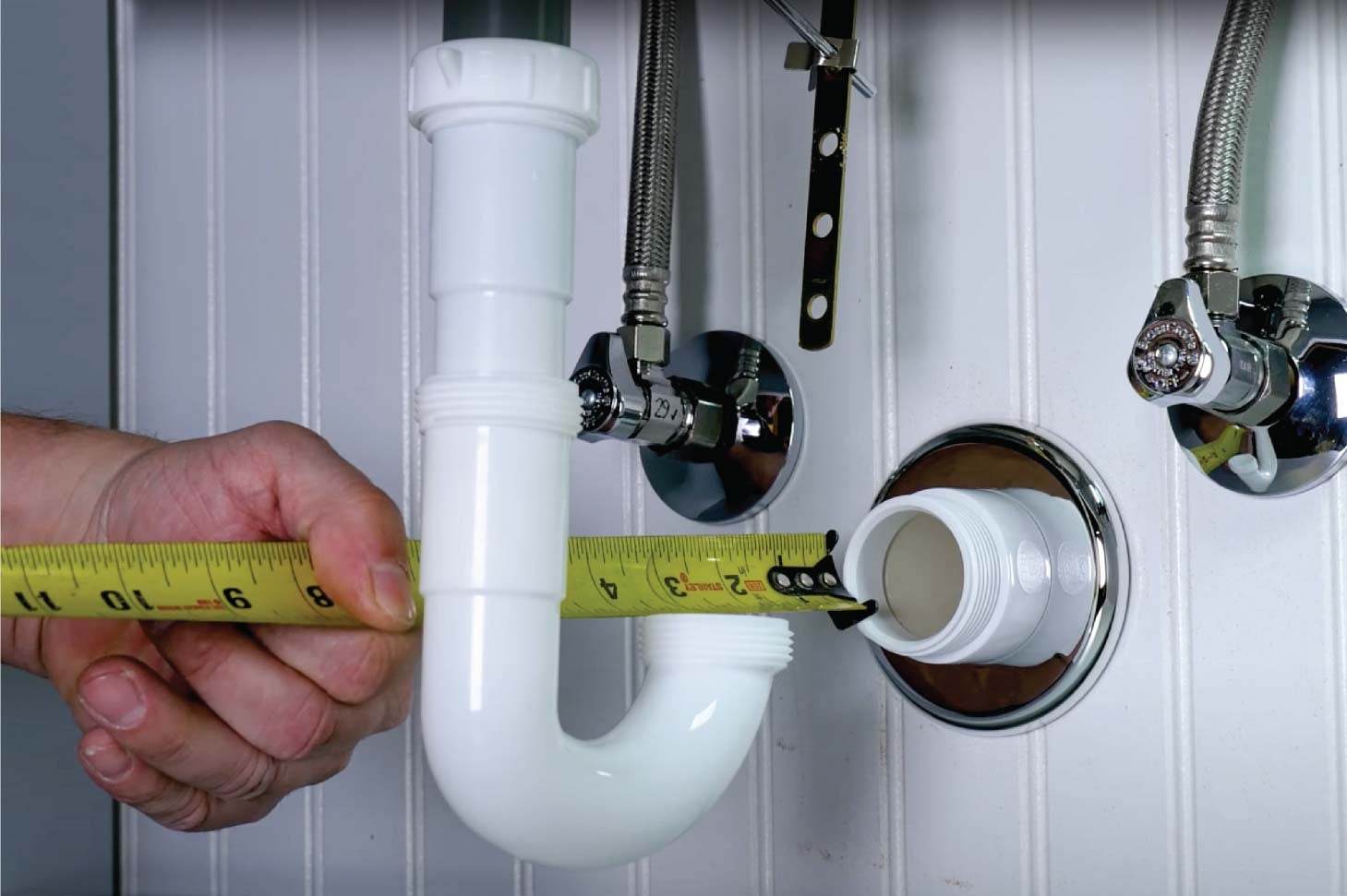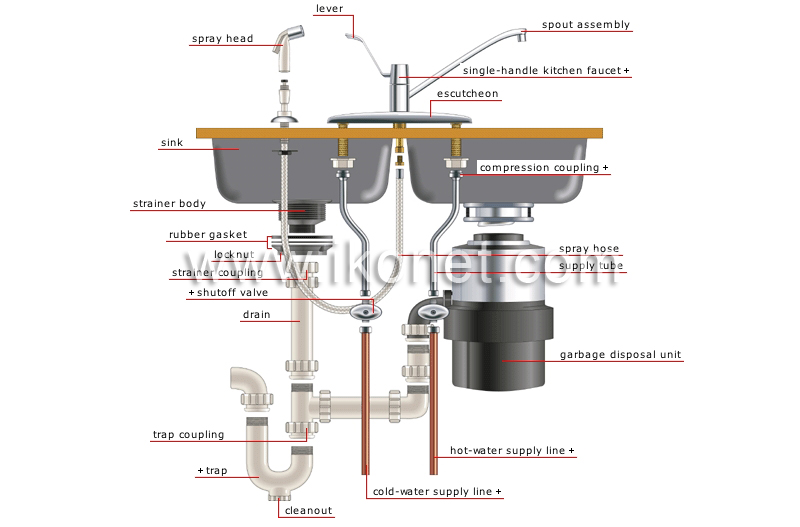The Complete Guide to Your Property's Plumbing System Anatomy
The Complete Guide to Your Property's Plumbing System Anatomy
Blog Article
Just how do you actually feel on the subject of Anatomy of a House: Understanding the Components?

Recognizing exactly how your home's plumbing system works is essential for every single home owner. From supplying clean water for alcohol consumption, cooking, and bathing to safely eliminating wastewater, a properly maintained pipes system is vital for your household's wellness and convenience. In this thorough guide, we'll check out the intricate network that composes your home's pipes and deal pointers on upkeep, upgrades, and handling usual problems.
Introduction
Your home's pipes system is greater than simply a network of pipelines; it's an intricate system that guarantees you have access to clean water and effective wastewater removal. Recognizing its parts and exactly how they collaborate can aid you avoid pricey repairs and ensure everything runs smoothly.
Standard Elements of a Pipes System
Pipelines and Tubing
At the heart of your pipes system are the pipelines and tubes that lug water throughout your home. These can be made from numerous materials such as copper, PVC, or PEX, each with its advantages in terms of longevity and cost-effectiveness.
Fixtures: Sinks, Toilets, Showers, etc.
Components like sinks, commodes, showers, and tubs are where water is used in your house. Understanding how these components attach to the plumbing system helps in detecting problems and preparing upgrades.
Shutoffs and Shut-off Factors
Valves control the circulation of water in your pipes system. Shut-off shutoffs are vital throughout emergencies or when you require to make repair services, enabling you to separate parts of the system without interrupting water flow to the entire residence.
Water System System
Main Water Line
The major water line links your home to the community supply of water or a personal well. It's where water enters your home and is dispersed to different components.
Water Meter and Pressure Regulator
The water meter procedures your water use, while a stress regulator makes sure that water flows at a risk-free pressure throughout your home's plumbing system, avoiding damage to pipelines and fixtures.
Cold Water vs. Warm water Lines
Recognizing the difference between cold water lines, which supply water directly from the major, and warm water lines, which lug heated water from the hot water heater, helps in repairing and preparing for upgrades.
Water drainage System
Drain Pipes and Traps
Drain pipes bring wastewater away from sinks, showers, and toilets to the sewage system or septic tank. Traps protect against sewer gases from entering your home and also catch debris that can trigger blockages.
Air flow Pipelines
Air flow pipes permit air right into the drainage system, stopping suction that can reduce water drainage and trigger catches to vacant. Proper ventilation is crucial for maintaining the integrity of your plumbing system.
Value of Appropriate Drain
Making certain correct drainage prevents back-ups and water damages. Frequently cleaning up drains and keeping catches can prevent pricey repair services and expand the life of your pipes system.
Water Heating System
Types of Hot Water Heater
Hot water heater can be tankless or conventional tank-style. Tankless heating systems warm water on demand, while storage tanks store warmed water for prompt use.
Updating Your Plumbing System
Factors for Updating
Updating to water-efficient components or replacing old pipes can boost water high quality, minimize water bills, and boost the worth of your home.
Modern Pipes Technologies and Their Advantages
Explore modern technologies like wise leak detectors, water-saving commodes, and energy-efficient hot water heater that can save cash and reduce ecological influence.
Expense Factors To Consider and ROI
Calculate the in advance costs versus long-term financial savings when thinking about pipes upgrades. Lots of upgrades pay for themselves with minimized utility bills and less fixings.
Exactly How Water Heaters Connect to the Pipes System
Recognizing exactly how hot water heater connect to both the cold water supply and warm water circulation lines assists in diagnosing concerns like inadequate hot water or leaks.
Maintenance Tips for Water Heaters
Regularly purging your hot water heater to get rid of sediment, inspecting the temperature settings, and checking for leakages can prolong its lifespan and boost energy efficiency.
Typical Plumbing Concerns
Leaks and Their Causes
Leakages can occur due to aging pipes, loosened fittings, or high water pressure. Dealing with leaks promptly protects against water damage and mold and mildew growth.
Blockages and Clogs
Clogs in drains and commodes are frequently triggered by purging non-flushable things or an accumulation of grease and hair. Using drainpipe displays and bearing in mind what goes down your drains pipes can stop obstructions.
Signs of Pipes Problems to Watch For
Low water stress, sluggish drains pipes, foul odors, or unusually high water expenses are signs of prospective pipes troubles that need to be addressed promptly.
Plumbing Maintenance Tips
Regular Assessments and Checks
Schedule annual pipes examinations to catch problems early. Look for indications of leakages, corrosion, or mineral accumulation in taps and showerheads.
Do It Yourself Maintenance Tasks
Simple tasks like cleaning tap aerators, looking for toilet leaks utilizing dye tablets, or insulating subjected pipelines in cold climates can protect against major pipes issues.
When to Call an Expert Plumber
Know when a plumbing concern requires expert experience. Attempting intricate repairs without appropriate expertise can bring about more damages and greater repair work prices.
Tips for Reducing Water Use
Straightforward habits like repairing leakages without delay, taking shorter showers, and running full lots of laundry and meals can preserve water and reduced your utility costs.
Eco-Friendly Plumbing Options
Consider lasting plumbing products like bamboo for floor covering, which is durable and green, or recycled glass for countertops.
Emergency Preparedness
Steps to Take Throughout a Pipes Emergency situation
Know where your shut-off valves lie and just how to switch off the water in case of a ruptured pipeline or significant leakage.
Importance of Having Emergency Get In Touches With Helpful
Keep call information for neighborhood plumbing technicians or emergency services conveniently available for quick reaction during a pipes situation.
Environmental Influence and Preservation
Water-Saving Fixtures and Appliances
Installing low-flow taps, showerheads, and bathrooms can substantially reduce water usage without compromising performance.
Do It Yourself Emergency Fixes (When Appropriate).
Temporary repairs like using air duct tape to patch a leaking pipeline or positioning a bucket under a leaking tap can minimize damage up until an expert plumbing technician arrives.
Conclusion.
Understanding the composition of your home's pipes system equips you to keep it properly, conserving money and time on repair services. By complying with routine upkeep regimens and staying educated concerning modern-day pipes modern technologies, you can guarantee your pipes system operates effectively for many years to find.
The Anatomy of Your Home s Plumbing System
Understanding the anatomy of your home s plumbing system is essential for any homeowner. It not only helps in identifying potential issues but also facilitates effective communication with professionals when repairs or upgrades are needed. Your home s plumbing system is more than just pipes and faucets; it s a complex network that ensures the efficient and hygienic flow of water in and out of your house. In this blog, we ll dissect the crucial components of your home s plumbing system. For those in Antelope Valley, Brock Plumbing is your trusted partner for all your plumbing needs, ensuring your system functions smoothly and efficiently.
Water Supply System
Main Water Line: This is where your home s plumbing system begins. The main water line connects your home to the public water supply or a private well. Pipes and Shut-off Valves: Pipes distribute water throughout your home. Shut-off valves are crucial for controlling the flow of water and making repairs without shutting off the entire system. Drainage System
Drain Pipes: These pipes carry waste and water away from sinks, toilets, and showers. Vents: Vents allow sewer gases to escape and help maintain proper pressure in the drainage pipes, ensuring efficient flow of wastewater. Traps: Every fixture has a trap, a U-shaped pipe that holds water and prevents sewer gases from entering your home. The most common is the P-trap under sinks. Fixtures and Appliances
Fixtures and appliances are the most interacted with parts of your plumbing system. They include sinks, toilets, showers, dishwashers, and washing machines. Each fixture and appliance has its own supply and drainage connection, ensuring they receive clean water and can dispose of wastewater effectively.
Water Heating System
Your water heater is a crucial component, providing hot water to various fixtures and appliances in your home. It can be tank-based or tankless, with each type having its own set of advantages and maintenance requirements. Regular maintenance is essential to ensure efficient operation and extend the lifespan of the unit.
Sump Pump
In areas prone to flooding or with high water tables, a sump pump is an essential part of the plumbing system. It s installed in the lowest part of your basement or crawlspace and pumps out water that accumulates, preventing flooding and protecting your home from water damage.
Septic System
Homes that are not connected to a municipal sewer system have a septic system and an underground wastewater treatment structure. Understanding how to maintain your septic system is crucial to prevent backups, odors, and early system failure.
Conclusion
Your home s plumbing system is a complex and essential network, ensuring the efficient and hygienic flow of water in and out of your property. Understanding its key components helps in maintaining it properly and identifying issues before they escalate into major problems. For residents in Antelope Valley, Brock Plumbing is dedicated to providing top-notch services, ensuring that every part of your plumbing system is in perfect working order. Trust our team of professionals to handle all your plumbing needs, ensuring your home remains comfortable, safe, and well-maintained.
https://brockplumbinganddrains.com/blog/the-anatomy-of-your-homes-plumbing-system/

As a serious person who reads about Exploring Your Homes Plumbing Anatomy, I thought sharing that editorial was really helpful. Loved our article? Please share it. Help others discover it. We treasure reading our article about Plumbing Installation 101: All You Need to Know.
Go Deal Now Report this page